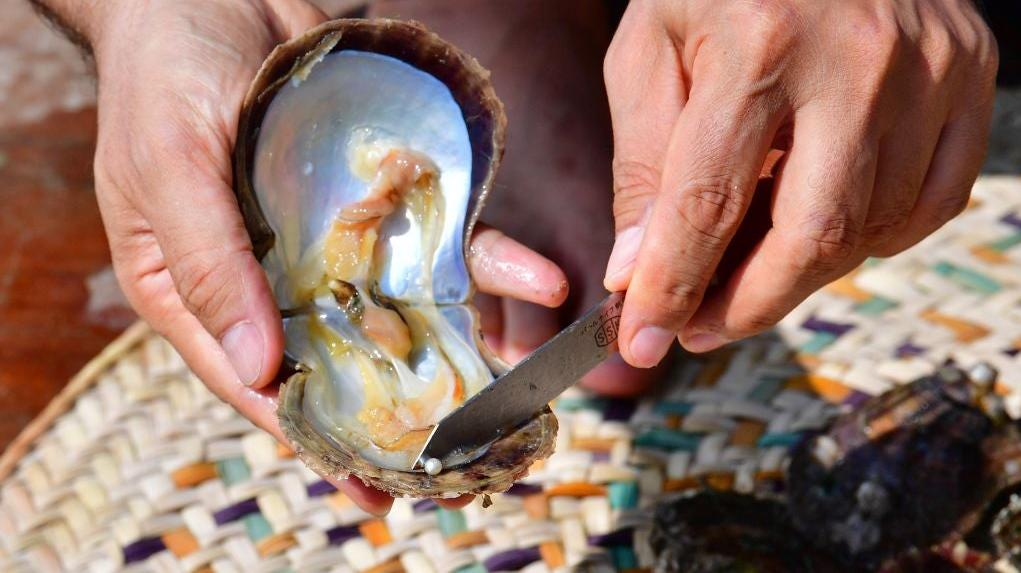What Are The Odds Of Finding A Pearl In My Oyster?
It’s not every day your appetizer yields a souvenir.
A couple in New Jersey were recently out for dinner when one of them found a surprise in their appetizer: a pearl. Today recently shared the story of Michael Spressler, who was chowing down on the last clam in the order when he felt an unexpected object rolling around in his mouth. At first he thought he'd broken a tooth, but it turns out the little sphere was actually a valuable little gem from the sea. That's quite a lucky find.
But just how lucky is finding a pearl in a mollusk? Typically, you'll find them hiding in oysters, but the chance of finding one is roughly one in 10,000, experts estimate. Sure, that's not as difficult as winning the lottery, but damn, the chances are still pretty low. Raw Pearls, a pearl specialist in Australia, has a great explainer on what pearls are and the types that exist.
What are pearls and how do they form?
A pearl is formed when a mollusk—that is, a clam, oyster, scallop, or similar bivalve—gets an irritant inside its shell. People commonly believe that the irritant is a grain of sand, but the American Museum of Natural History says it's usually a food particle that gets the process started. The bivalve will create layers of a substance called nacre around the irritant; these are secretions made of aragonite and conchiolin, which are the same minerals and proteins that make up the mollusk's shell. Nacre has a crystalline structure to it, resulting in that beautiful luster everyone lusts for (heyo!).
Of course, pearls can be farmed too. Pearl oysters are seeded with tiny bits of mussel shell, artificially causing the oyster to begin the pearl-making process. Each oyster produces one to two pearls per seeding (the technical term is "nucleation"). Some varieties are destroyed upon harvest, but there are others that can be reseeded for more pearls later.
What can you do if you find a pearl in your food?
I've found miniature pearls in mussels before, though I'm sure they had no value to them, because they were miniscule, not at all the type used in necklaces and earrings. The pearl that Spressler found in his clam had an impressive diameter of 8.8 millimeters, making it potentially worth thousands of dollars. But rather than sell it, the couple decided to keep it and possibly set it in some fine jewelry. How often can you say your jewelry came from something you were about to swallow?
If you find a pearl in an oyster at some point, chances are pretty low that the pearl will be worth any serious cash. It's still pretty cool, though, and definitely worth keeping for fun and bragging rights. It's not every day your appetizer yields a souvenir.
